 When traveling provence, it’s hard to get away from rosé. It seems to flow through the hills like a secret underground river, always popping up just when you need it. Bars, restaurants, cafes, market stalls, supermarkets. Im convinced there’s also a magic rosé fairy that delivers an extra bottle to the dinner table, just when you thought you’d had enough. It leers at you all beautiful and alluring, glittering like a pink diamond, saying “Drink me”, and like Alice, you do – without question. Sometimes it’s light, fruity, laced with a touch of residual sugar. Other times it’s as playful as candy-floss, popping like bubblegum and surprising you with it’s dryness. Occasionally you get a serious one, varying from the deep and berry-filled, spicy as a Cumberland jelly wine, to the rhubarb and rose, mineral and onion-skin coloured rosé that just makes you want to cuddle everybody.
When traveling provence, it’s hard to get away from rosé. It seems to flow through the hills like a secret underground river, always popping up just when you need it. Bars, restaurants, cafes, market stalls, supermarkets. Im convinced there’s also a magic rosé fairy that delivers an extra bottle to the dinner table, just when you thought you’d had enough. It leers at you all beautiful and alluring, glittering like a pink diamond, saying “Drink me”, and like Alice, you do – without question. Sometimes it’s light, fruity, laced with a touch of residual sugar. Other times it’s as playful as candy-floss, popping like bubblegum and surprising you with it’s dryness. Occasionally you get a serious one, varying from the deep and berry-filled, spicy as a Cumberland jelly wine, to the rhubarb and rose, mineral and onion-skin coloured rosé that just makes you want to cuddle everybody.Not only that, it’s cheap. Even your wallet will join in the haunting calls of the rosé siren. It’s possible to get good Provincial rosé for 3 Euros a glass in a café, or 6 Euros a bottle in a store. The great ones rarely hit 20 Euros. Why? Because it’s fairly inexpensive to make, is quickly made (usually just pressed and fermented – no leaving on skins and monitoring for days and days) seldom needs oak (and if it does, it’s second hand), doesn’t need to age in the bottle before release, and can contain almost any grape variety the winemaker has leftover from harvest. For this reason, it also attracts quite a bit of criticism from wine snobs, but that’s fine. WE know it’s often complex and insanely drinkable. They can keep spending 50 Euros a bottle on Sancerre to go with their summer luncheons, and we’ll just titter behind their backs.
There are several regions producing rosé in Provence, one of which contains my favorite sub-region, plus a border beauty you cannot forget from the southern Rhone. There's other wine regions just on the edge of the rhone, and yet still in greater Provence, and there's always the good old vin de pays (country wine) of Provence, referring to wine made anywhere in the area and for some reason not fitting into a region, e.g. it is blended from several regions or breaks some rule in the particular region from which the wine comes (e.g the grape varieties included).
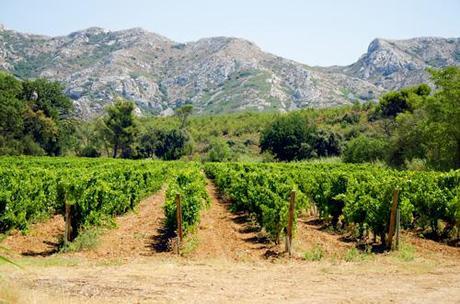
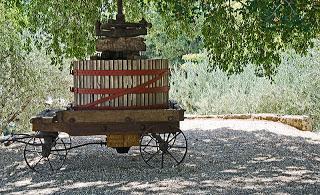 Côtes de Provence AOC is the largest region, and covers over 20,000 hectares of the Var, Bouches du Rhône and Alpes Maritimes departments. It’s therefore difficult to pinpoint a ‘terroir’ and narrow down what one should expect in the bottle. Soils vary from limestone to alluviam soil to sand, altitudes are a regular rollercoaster. The most predominant features are free-draining soils and good ventilation (helps avoid frost), with some pretty hot summers. There are now three designated terroir denominations with more specialized wine types - Sainte-Victoire, Fréjus and La Londe.
Côtes de Provence AOC is the largest region, and covers over 20,000 hectares of the Var, Bouches du Rhône and Alpes Maritimes departments. It’s therefore difficult to pinpoint a ‘terroir’ and narrow down what one should expect in the bottle. Soils vary from limestone to alluviam soil to sand, altitudes are a regular rollercoaster. The most predominant features are free-draining soils and good ventilation (helps avoid frost), with some pretty hot summers. There are now three designated terroir denominations with more specialized wine types - Sainte-Victoire, Fréjus and La Londe.Chateau Peyrassol
Flassans sur issole, not far from Brignols. Two levels of rosé, both good at twice the price. Ancient vineyard goes back to the 13th century and the Knights Templar.
Chateau Margui
Just outside of Châteauvert. Renovated Chateau – at this stage no restaurant but beautifully done, and can be viewed and toured (appointment best)
Clos d'Aalari.com
A female run operation, small, with a lovely homestead and even some accommodation. Just outside Lorgues. Gorgeous rosés, particularly the “Grand Clos”
Chateau Sainte Roseline
Winery and abbey in Les Arcs-sur-Argens. Pristine, and with many levels of rosé to try. Gorgeous.
Clos Des Roses
Just outside of Frejus, with some great value wines and a super restaurant. There is also a hotel and divine pool.
Chateau Berne
Ooh la la – this is not just a winery but a resort with a chateau, three restaurants and a day spa. For those who like it five-star
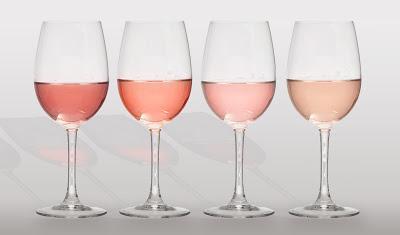 The Coteaux Varois AOC is in the center of Provence, running from the Var down to the border of the Aix en Provence region described below. 60% of the region is dedicated to rosé production. It’s an area that has attracted some interest from wine producing greats from other areas like Burgundy due to the altitude and protected cooler climate. Main grape varieties grown are Grenache, Cabernet Sauvignon, Cinsaut, Mourvedre, Syrah and Carignan.
The Coteaux Varois AOC is in the center of Provence, running from the Var down to the border of the Aix en Provence region described below. 60% of the region is dedicated to rosé production. It’s an area that has attracted some interest from wine producing greats from other areas like Burgundy due to the altitude and protected cooler climate. Main grape varieties grown are Grenache, Cabernet Sauvignon, Cinsaut, Mourvedre, Syrah and Carignan. Chateau la Curniere
Rambling gardens, chabres d’hotes and Turkish delight rosé. Route de Montmeyan - Tavernes
Chateau Margilliere
can be visited and also has a B&B if you want to stay. Rustic chateau and a couple of rosés to try.
Chateau Fontainebleau le Val, near Montfort sur Argens can be visited by appointment by calling 04 94 59 59 09, or emailing [email protected]
as can Château Miraval on telephone 04 94 86 46 80 or by emailing [email protected]
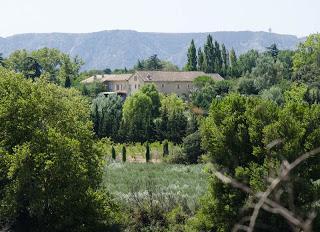 The Coteaux d’Aix-en-Provence, just to the west of the Varois, and then reaching south and north as it continues further west, is the second largest wine region in Provençe, at around 4,000 hectares. It takes its name from the engaging and historic town of Aix-en-Provence (“Ex” to the locals). Only 35% of this region’s wine produce is rosé, but there’s still plenty of it. Major grape varieties include Grenache, Cinsaut and Mourvedre. Rosés here are usually fragrant with plenty of redcurrant, raspberry or other red fruits, sometimes with a slightly herby/peppery twist.
The Coteaux d’Aix-en-Provence, just to the west of the Varois, and then reaching south and north as it continues further west, is the second largest wine region in Provençe, at around 4,000 hectares. It takes its name from the engaging and historic town of Aix-en-Provence (“Ex” to the locals). Only 35% of this region’s wine produce is rosé, but there’s still plenty of it. Major grape varieties include Grenache, Cinsaut and Mourvedre. Rosés here are usually fragrant with plenty of redcurrant, raspberry or other red fruits, sometimes with a slightly herby/peppery twist.Chatea Calissanne
An historic chateau with 1000 hectare estate and a lovely curranty rosé. Not far from Lançon de Provence, where they also have a boutique.
Chateau Revelette
Lovely property with stunning wines, not just rosé, and a joint venture producing wines in Catalonia too. Near Jouques, NE of Aix.
Chateau Paradis
Very well made and squeaky clean aromatic rosé that is very good value for money. Quartier Paradis, Le Puy Sainte Réparade
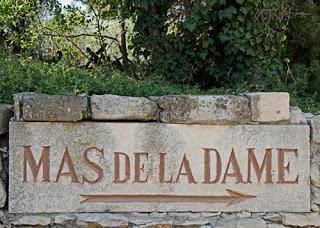 Les Baux-de-Provence AOC is within the Coteaux d’Aix-en-Provence. It’s a toasty little center, rocky and coated in gnarled old olive groves, and even the surrounding valley of central village Les Baux-de-Provence, is named the Valley of Hell (Val d’Enfer). The wine production is focused mainly on viscous and velvety fruit-cake styled reds, but there is some excellent rosé and a little white too. Rosés are usually lighter in colour, ranging from pale salmon through to a barely-there stain of peach. They are lean and rhubarb on the front, creamy and floral on the middle palate and honeyed, long and mineral on the finish. Les Baux is also an entirely bio-dynamic region, a regulation self-imposed by the small group of winemakers in the region to stop chemicals being blown around the valley by the hellish seasonal Mistral.
Les Baux-de-Provence AOC is within the Coteaux d’Aix-en-Provence. It’s a toasty little center, rocky and coated in gnarled old olive groves, and even the surrounding valley of central village Les Baux-de-Provence, is named the Valley of Hell (Val d’Enfer). The wine production is focused mainly on viscous and velvety fruit-cake styled reds, but there is some excellent rosé and a little white too. Rosés are usually lighter in colour, ranging from pale salmon through to a barely-there stain of peach. They are lean and rhubarb on the front, creamy and floral on the middle palate and honeyed, long and mineral on the finish. Les Baux is also an entirely bio-dynamic region, a regulation self-imposed by the small group of winemakers in the region to stop chemicals being blown around the valley by the hellish seasonal Mistral.Mas de la Dame
Surrounded by rocky olive groves and crispy yellow fields. It's not hard to see why Van Gogh painted it. Great rosé, but the rest of the wines are also superb.
Chateau d’Estoublon I have blogged about previously. Lovely chateau, restaurant, chapel, and more
Chateau Romanin
A must. The rosé is good, the white and red excellent. But go to visit the underground cathedral that is the wine cellar. Amazing. Cooking school also sounds interesting! Near St Remy de Provence (direction Orgon)

Bandol is the region probably most known and respected, even by international wine snobs. It stretches around it’s namesake village of Bandol (a large fishing village with a sandy beach and superb market, well worth a visit), and around the equally visit-worthy Cassis and Marseille. It’s a fairly small region, covering only eight communes. It’s free-draining limestone soil and mediterranian climate lend the region towards the production of Mourvedre (malbec), which is always at least 50% of the blend. It’s a marvelous for the production of rosé, with it’s earthy and almost savoury nuances complimented by some very forward strawberry notes. Bandol rosés are often a little bigger in body than the other rosés of Provence, making them an ideal match to the full flavoured seafood dishes of the area, namely bouillabaisse.
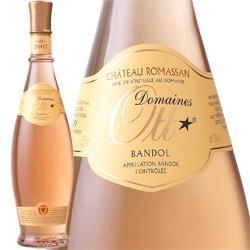 Chateau de Pibarnon
Chateau de PibarnonLa cadière d'Azur. Spicy, pomegranate-like rosé, beautiful chateau and terraced vineyards (restanques)
Domaine Tempier
World famous, and one of the most respected wineries in the area. They can be found just near Le Plan du Castellet
Domaine Ott
Again, are world famous, particularly for their amphora bottles. Visit Chateau Romassan, Route de Mourvèdres, Castellet
Or try the smaller Gros nore - they produce one of the most intense rosés in the region, and a lovely red. La Cadière-d'Azur
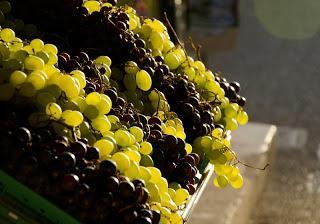 The Coteaux de Pierrevert AOC is a small wine producing area of Provence, geographically, production-wise and also reputation. It is a slightly cooler area, producing lighter wines. There are many domains to visit, but I’d suggest starting at the Cave Pierrevert, in the village. They are open for tasting Monday to Saturday with a siesta from 12 to 2pm. Saying that, Chateau Rousset is a worthwhile trip.
The Coteaux de Pierrevert AOC is a small wine producing area of Provence, geographically, production-wise and also reputation. It is a slightly cooler area, producing lighter wines. There are many domains to visit, but I’d suggest starting at the Cave Pierrevert, in the village. They are open for tasting Monday to Saturday with a siesta from 12 to 2pm. Saying that, Chateau Rousset is a worthwhile trip. The outsiders
There are two regions that cannot be forgotten on a rosé journey through Provence, but they lie geographically just outside the boundaries of the Provence wine region.
Tavel
(blogged about by me here) Most southerly Rhone AOC, just across the Rhone River from Avignon.
Chateau d'Aqueria
Beautiful chateau with wines from Lirac too.
Domaine Mordoree
One of the best rosés I have ever tried. Right in town
Montezargues
Owned by the same group as Chateau La Nerthe in Chateauneuf du Pape, with similarly pristine wines.
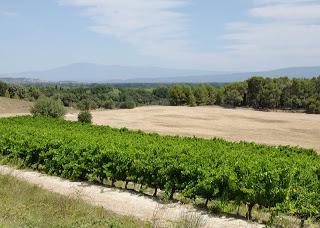 Cotes de Luberon
Cotes de LuberonA region that encompases a whole heap of great cheap red-producing towns of the southern Rhone, plus some decent (if a little light) rosés.
Chateau Val Joanis
Incredible gardens and cherry-scented rosés. Near Pertuis
Château La Canorgue
You may recognize from the film “A good year”. An organic setup near Bonnieux.
Chateau Turcan
A nice range of rustic wines and an wine museum full of antique bits and bobs. Route de Pertuis, Ansouis Ultra pale and floral rosé, and 11th century abbey is a must. (It’s also possible to rent a 3-br area in the chateau by the week). Near Pertuis.
